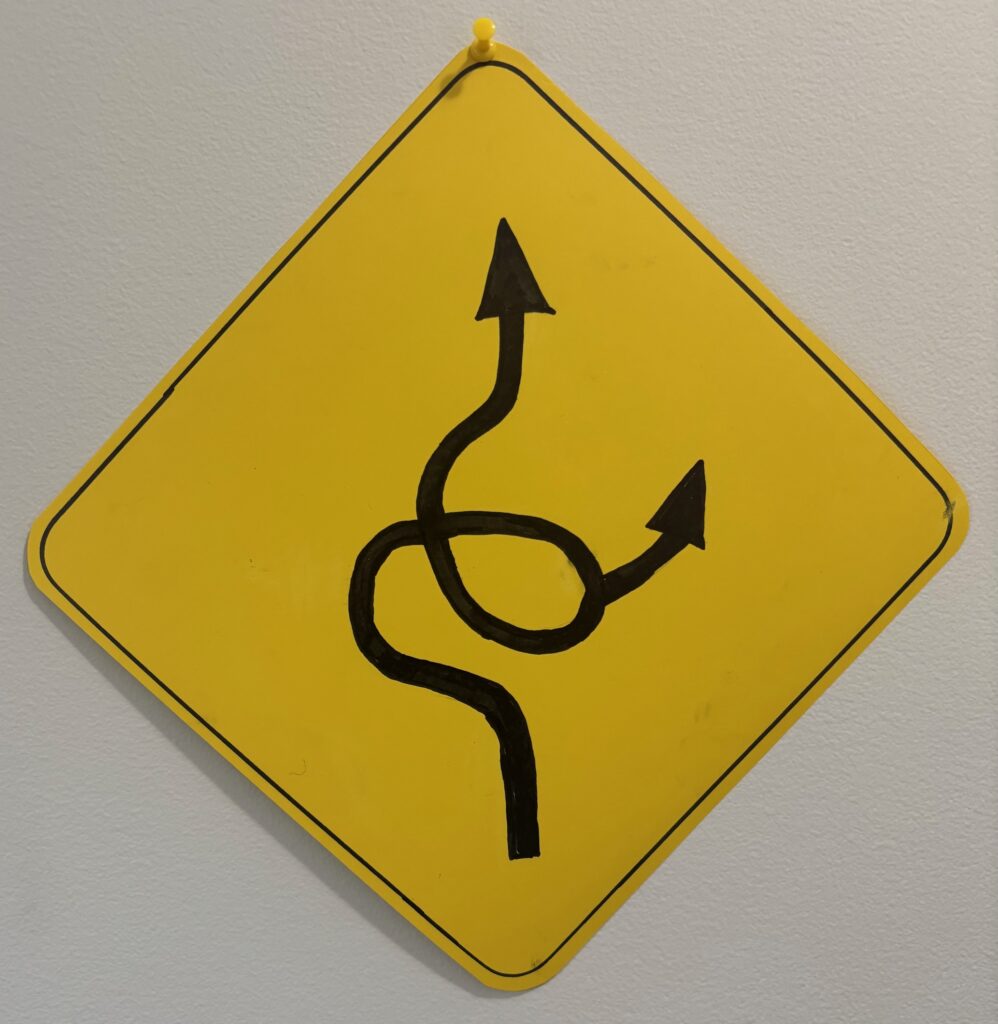
Artist Statement
This piece, inspired by the iconic “twisty” road sign, symbolizes the unpredictable, nonlinear journey of learning for both students and teachers. The winding path reflects the reality that growth rarely follows a straight line. As an educator, I believe in embracing detours, switchbacks, and moments of uncertainty as essential parts of the learning process.
Ultimately, this piece represents my core belief: education is not about arriving at a final destination, but about developing the resilience, skills, and mindset to keep moving forward—no matter how the road turns.
Teaching Philosophy
I believe for any learning to take place, students need to feel comfortable in their environment. My philosophy revolves around building relationships and creating a classroom community where students want to engage in learning. It is built on principles and beliefs including respect, integrity, accountability and adaptability. I also recognize and value the diversability that students bring to the classroom and recognize students’ success as growth, and not just results. At the forefront of my beliefs is the need for building student rapport.
Building genuine rapport lays the foundation for engagement, risk-taking, and belief in their own potential. My goal in the classroom is to create a community where all students are recognized and feel valued. This is more than just learning student names, it’s showing that you are genuinely interested in their lives and that you care. I believe that getting to know students allows me to tailor content that aligns with students’ interests and that forming relationships shows that I respect the students, and in turn they will respect me.
Accountability is shared in my classroom. I expect students to engage with integrity and effort, while I am responsible for creating clear expectations, meaningful feedback, and an inclusive space for all learners. I believe in leading by example and am accountable for my actions in the classroom. I also adjust instruction based on student input, offering choice and flexibility to meet diverse needs.
I recognize that everyone learns differently, and I value the diversability that students bring to the classroom. I believe having a diverse classroom brings culture to the classroom and provides different views and perspectives that create a well rounded community. I believe that being adaptable is key to teaching in a diverse environment which challenges me to think outside of the box when creating lessons and giving instructions. I want to create an environment where everyone has an opportunity to learn and where success is based on growth, not just overall results.
It is important to foster a growth mindset and I believe that abilities develop over time through effort, perseverance, and self-reflection. I model this mindset by sharing my learning process and openly adapting when things don’t go as planned. School is a place that students learn, and sometimes it is by making mistakes. I show students that these mistakes are learning opportunities, and it’s how we deal with them moving forwards that shows growth and integrity.
I view teaching as more than just subject based content and want to prepare students to be successful in life. I design lessons that involve real-world applications, hands-on tasks, group discussions, and problem-solving. By centering relationships, reflection, and meaningful learning, I want to help every student feel capable, confident, and a sense of pride with their accomplishments.. It is my goal to have students leave with not only skills to deal with life, but also a curiosity and desire to continue learning.
